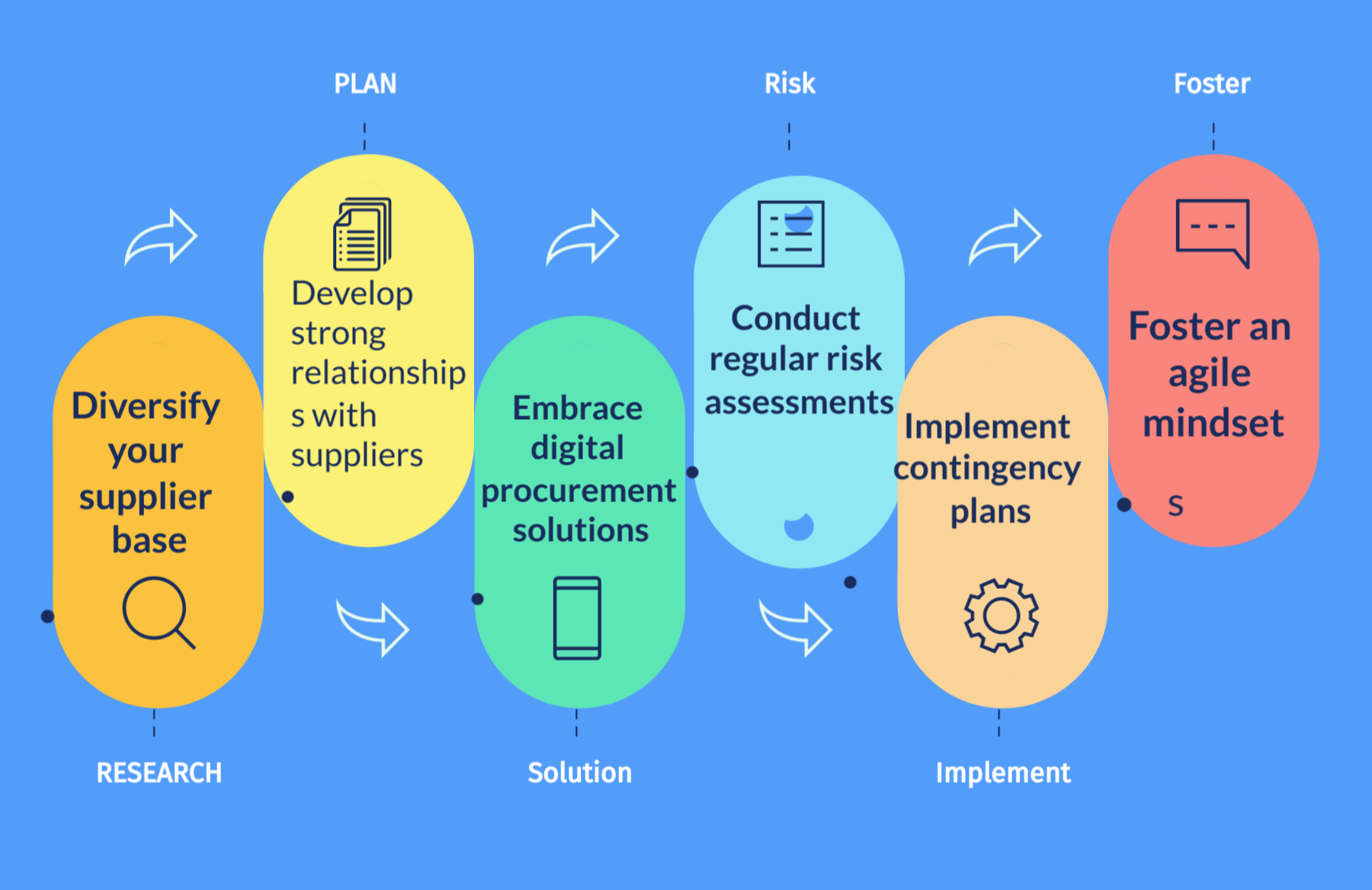Steps to Build a Resilient Procurement Supply Chain
To build a resilient procurement supply chain, organizations need to take proactive measures that address the challenges mentioned above. Here are some essential steps to achieve this goal:
Diversify your supplier base
One of the key strategies for building resilience in procurement is diversifying your supplier base. This means reducing reliance on a single supplier by sourcing goods and services from multiple suppliers. In the event of a disruption, having alternative suppliers can ensure continuity in operations and reduce the impact on your supply chain.
Develop strong relationships with suppliers
Strong supplier relationships are crucial for building a resilient procurement supply chain. By maintaining open lines of communication and collaborating with your suppliers, you can gain valuable insights into potential risks and develop contingency plans together. This also helps to establish trust and transparency, which is essential for effective risk management.
Embrace digital procurement solutions
Digital procurement solutions can significantly enhance visibility and transparency in the supply chain. By automating processes such as supplier monitoring and performance tracking, organizations can gain real-time insights into their supply chain operations. This enables them to identify potential risks early on and take proactive measures to mitigate them.
Conduct regular risk assessments
To effectively manage risks in your supply chain, it is crucial to conduct regular risk assessments. This involves identifying potential threats, evaluating their likelihood and impact, and developing strategies to address them. By regularly reviewing and updating these risk assessments, organizations can stay ahead of potential disruptions and maintain a resilient procurement supply chain.
Implement contingency plans
Contingency plans are crucial for maintaining business continuity in the event of a disruption. These plans should include backup suppliers, alternate sourcing strategies, and crisis management protocols. By having these measures in place, organizations can mitigate the impact of disruptions on their procurement supply chain and ensure uninterrupted operations.
Foster an agile mindset
An agile mindset is essential for building resilience in procurement supply chain management. This involves being proactive, adaptable, and responsive to changes and disruptions. By fostering an agile mindset among employees and stakeholders, organizations can build a culture of continuous improvement and be better equipped to handle unexpected challenges.





